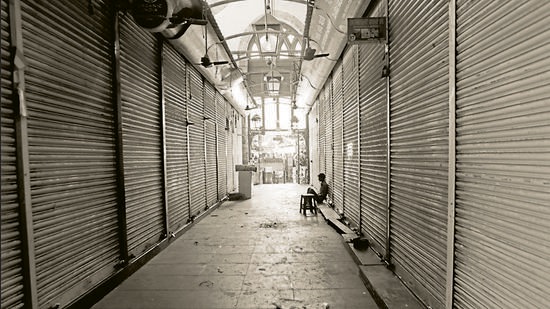As WPI spikes and rural incomes dip, is India staring at stagflation?
An HT analysis of inflation numbers suggests that this could be a beginning of a trajectory where incomes and therefore purchasing power in rural India will face a disproportionate squeeze
Wholesale Price Index (WPI), the best proxy for producer prices in India, grew at a record 10.5% in April 2021. This is the highest year-on-year growth in the 2011-12 WPI series. Wholesale inflation in April was a record 6.19 percentage points higher than retail inflation, as measured by the Consumer Price Index (CPI) value in April 2021. The difference between WPI and CPI is largely a reflection of difference in composition of the two indices – CPI, unlike WPI, is built to capture household budgets and has a higher weight of food and services – rather than a difference in economic conditions in wholesale and retail markets. What has been increasing at a fast pace are prices of manufactured goods and important intermediate inputs such as fuel.

Also Read | Pandemic has led to rise in poverty, inequality; don’t be complacent: JNU prof
An HT analysis of inflation numbers suggests that this could be a beginning of a trajectory where incomes and therefore purchasing power in rural India will face a disproportionate squeeze. Such a development, if it persists, could generate headwinds for rural demand going forward. This can potentially shut down the rural demand engine of the economy at a time when urban India is already reeling under the impact of lockdowns, and contribute to a stagflation – low growth, high inflation – like situation.
Non-food prices are driving both CPI and WPI
While the April WPI numbers mark an all-time high, CPI actually came down from its 5.5% value in March 2021 to 4.3% in April 2021. Retail inflation in April was at much lower levels compared to what it had been in the last year. The April 2021 value is the second lowest in the last twelve months.
However, there is one common thread which is visible in the latest CPI and WPI numbers. Prices of non-food items are growing at a faster pace than that of food items. In the WPI basket, inflation in the primary food articles category is lagging behind overall food prices. This suggests that prices received by farmers are particularly sluggish at the moment.
Real rural wages have been stagnant, and they could fall going forward
The latest available rural wage data – this can be considered a good proxy for incomes at the bottom of the pyramid – is for the month of March 2021. In real terms, rural wages in March 2021 were marginally lower than what they were in March 2019. The situation is likely to become worse going forward as the second wave of Covid-19 infections disrupted economic activity and has led to lockdown or similar restrictions in most parts of the country. Lockdowns means fall in economic activity, which entails shedding of workforce and hence reduction in wages. The Nomura India Business Resumption Index (NIBRI) fell to 61.9 – 100 being the pre-pandemic level of economic activity — in the week ending May 16. It was at 94.6 in the week ending March 28. Centre for Monitoring Indian Economy (CMIE) database shows a rise in unemployment levels in the month of April compared to March.
Fall in rural wages could create further price pressures for food items
Stagnant or falling rural incomes are bad news for food demand. Food items have a weight of 47.3% in the rural CPI basket, compared to just 29.7% in urban areas. The difference is particularly high in case of cereals and vegetables, the two food-items which have suffered the biggest disinflation in April. While the public distribution system provides for subsidised provisioning of rice and wheat to the poor, thereby providing a cushion against income shock driven consumption, no such support exists for vegetables. This can create further headwinds for vegetable prices.
Policy induced high fuel prices will create tailwinds for cost of cultivation
Prices in the fuel and power sub-category of the WPI grew at 20.9% on a year-on-year basis in April 2021. This increase is a result of 45% inflation in the mineral oils (petroleum) category. Coal prices grew by just 0.6% while electricity prices actually contracted by 2.5%. The rise in petroleum prices is largely policy-driven as the government has not withdrawn high taxes it had imposed on petrol and diesel when crude petroleum prices fell sharply owing to a collapse in demand a year ago.
A comparison of the mineral oils WPI index and India’s crude oil basket (COB) price data from the ministry of petroleum shows this clearly. While COB prices are at much lower levels than their historic high, the mineral oil WPI index is at a disproportionately higher level. Unless the government brings down its taxes, high petroleum prices will add to farming costs both directly (use of pump sets) and indirectly (cascading affect through other goods). Because petrochemicals are an important component in the fertiliser industry, their prices are also expected to rise as crude oil prices normalise from last year’s lows.
All Access.
One Subscription.
Get 360° coverage—from daily headlines
to 100 year archives.



HT App & Website







